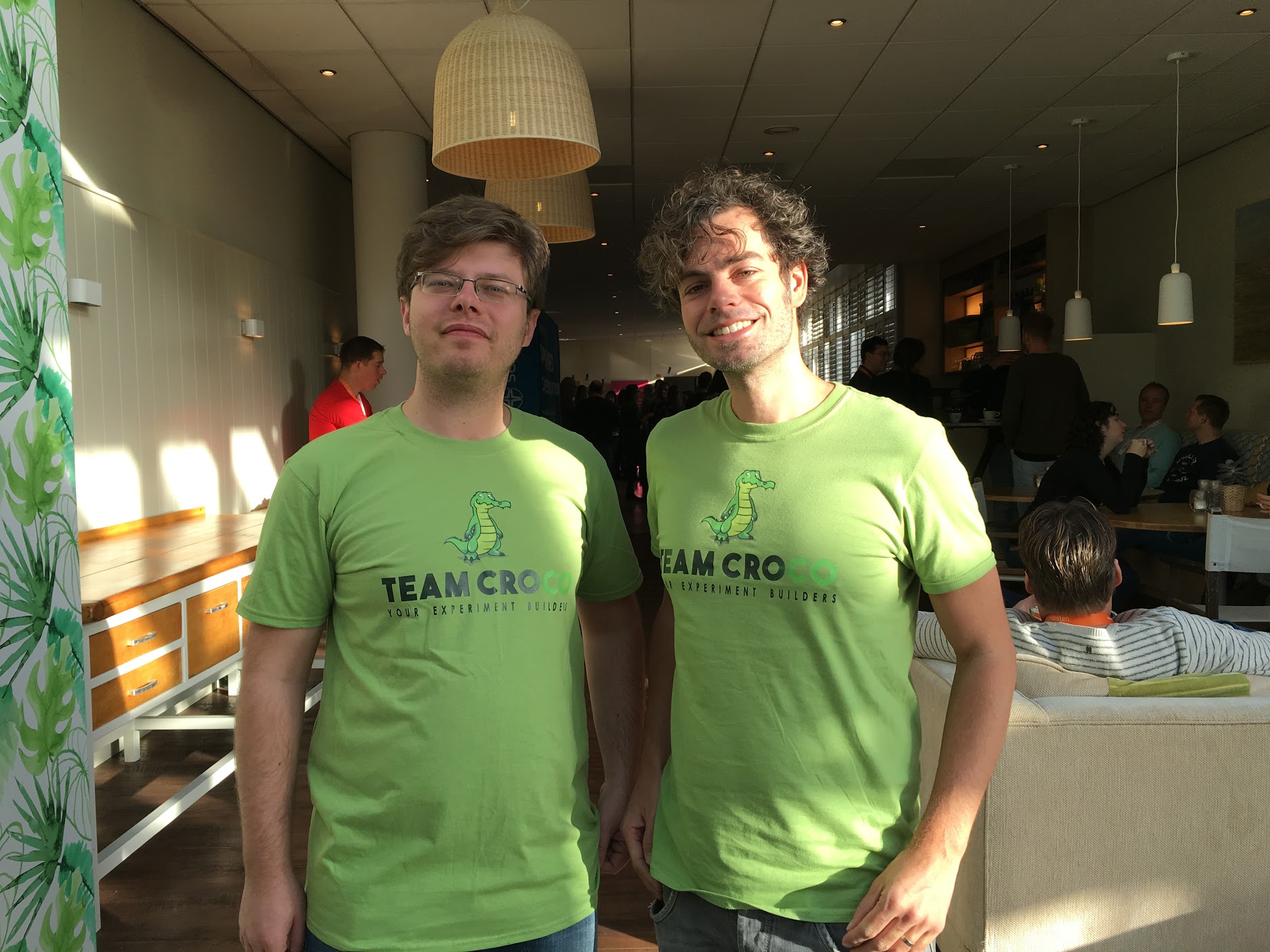
10 Sep Q & A with……Martin Reintjes, Team Croco
Pull a Jira ticket. Join the end of the queue. We can code your test by next March. Do any of these responses by your web development team sound familiar? When you’re looking to get resource to code an AB test quite often you’re competing with a myriad of other web projects to secure the time to build your experiment. Which is why Team Croco’s test building service could be a game changer for your optimisation project. Team Croco build and support tests. That’s it. They just build and support tests. So not only do they have the exact level of expertise to build functional experiments in the shortest possible length of time, they’ve already anticipated a lot of the pain that comes from the specific requirements of running a testing programme. Binary Bear recently caught up with Croco CEO Martin Reintjes to discuss tools, testing and Thailand.
Why did you start the business?
Team Croco is a pretty unique business. We are a completely remote company, we don’t have any offices, we work solely online. Our team spans age globe with people in Latin America, Asia, Africa and Europe. Of course, this brings challenges, but most of all it enables us to find the best players in the world, train them in our process and let them learn from each other. Making the world a bit smaller in the process.
For me, I love the freedom that working like this brings. I just need Wi-Fi and I can work from anywhere. So, in October I move from my home base in the Netherlands to Thailand for 2 months to work from there. And it’s not just me, the whole Team Croco team makes use of this.
What I also love is that we’re not stuck with hiring in one location. We can now bring the opportunity to work with awesome clients in a rather new and exciting industry to talented people all around the world.
What sort of problems do you think most companies are having trying to do split-testing in-house?
When you look at industry surveys, the number 1 problem that is reported time after time again is lack of development resources to build a/b-tests.
If a company has in-house developers, they are usually working on building new features and they don’t see the value in incremental testing. And who are we kidding: developing features is way sexier then tweaking pages. But of course, it’s not about sexiness, it’s about creating revenue for your company.
But maybe a bigger problem we see, that is less obvious, is the lack of a proper testing process. You want to be optimising continuously, not doing a couple of ad-hoc experiments. And here lies the problem, most companies don’t have a dedicated in-house CRO team. So, ab-testing is always something that also-needs-to-get-done by an already busy online marketer. We see very few companies who manage to run tests on a continues basis. Especially in smaller companies, who need every edge they can find, and a/b-testing can give them a big edge.
Therefore, besides helping with dedicated a/b-test development resources, Team Croco now also helps with the structure and management of your CRO program.
Where are the skill-gaps in the industry? Is it about processes or technical capabilities?
It’s both, most people are aware that split-testing is something they should be doing. But they don’t know where to start. And when you have someone who really wants to move forward and start testing. They stop at the complexity of the process and their technical limitations. CRO really is a multi-disciplinary team sport. Most companies who are serious about it create teams that feature someone with analytics skills, a UX-designer, a front-end developer, a marketing manager and even a psychologist.
What is your view of the testing tools market? Who in your opinion is “winning” the battle of the tool vendors?
A/B-testing tools become more and more a commodity. They can all do the same. And besides, it’s not about the size or features of your tool, it’s about what you do with it. If you are just testing headlines, you are not thinking big enough, but if you really start testing page elements, you need coders. And when you have taken that step and are properly testing. Even a tag-manager will do to inject your code.
So, it’s not about the tools, it’s about your process and what you are testing.
What types of tests do you see working best for your clients? AB tests or Multivariate tests?
There are very few sites that have enough traffic to do Multivariate tests. Most just don’t have the numbers.
So just focus on A/B-tests and make sure you go bold with your experiments. Don’t just change a headline or button colour, no, try to improve whole page elements. Why not restructure your category menu? Or do something completely different with your product images? And have you tried taking a step out of your check-out flow? It’s all possible. And the data shows that bigger changes can cause bigger uplifts.
What advice do you have for businesses trying out AB testing for the first time?
Don’t overthink it.
Install a tool, any tool.
Brainstorm a couple of test ideas.
And just start testing them.
Oh, and make sure you block time for it in your calendar!
What in your opinion is the next big thing in the testing industry?
There is more and more centralisation of ecommerce by big players like Amazon or Aliexpress and these companies run multi-million-dollar testing programs. This is a tread for the smaller players. And you see that even the FBA guys (who started their brands exclusively on Amazon) are trying to move off platform, so they have more control. Following this trend, I see a wave of boutique e-commerce stores popping up soon.
These all want to compete with Amazon.
They must be different.
They must be unique.
They want to give an awesome customer experience.
But most of all, they need a shop that converts so their businesses survive.
These shops are built on hosted platforms like Shopify or Bigcommerce. I believe they will find a way to somehow consolidate their a/b-testing efforts, so they can also reap the benefits of testing, even when you don’t have the numbers.




No Comments